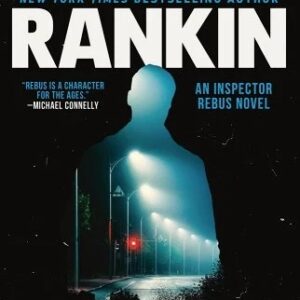Owning racehorses is the preserve of royalty, the rich and the famous.
Right?
Wrong!
These days anyone can own a racehorse, or at least a part of one, as a member of a “syndicate”.
Syndicate ownership was first permitted by the British Jockey Club in 1975 and, since then, it has become the most popular method of owning a racehorse, allowing those who wouldn’t be able to afford to purchase individually to become part-owners, sometimes for as little as £45 (US$60), not that you get much more than a few strands of mane and a clip of an ear for that money.
However, being a member of a high-end syndicate can cost you a lot more than that.
Racehorse ownership has always been a risky business, at least financially. According to the 2024 US Jockey Club Fact Book about 45,000 horses started in all the races across North America last year, competing for gross purses slightly exceeding $1.3 billion. That averages out at just under $30,000 per starter. Whereas at first sight that might seem a reasonable sum, you have to remember that keeping a racehorse in training is not cheap. On average it will set you back $75,000 per horse per annum, which covers the training, veterinary and other fees. That is comparable to the cost of sending your son or daughter to Harvard, or to another Ivy League university.
But, of course, not every starter wins the average. In 2023, 31 horses earned over a million dollars in prize money. But those 31 are only a tiny fraction of the total number in training. And a mere 8% earned enough to cover their annual keep. The median earning of $14,000 means that a typical racehorse earns back only about 20% of its costs, without even taking into account the initial outlay required to purchase the horse in the first place.
So why do people do it?
Partly because owning a racehorse is to buy into a certain lifestyle, a world of glamour and excitement, and partly because you might, just might, scoop a fortune.
No one who buys a Mega Millions lottery ticket really expects to win the jackpot, not with odds of 1 in 300 million, but if you don’t buy the ticket, you have absolutely zero chance.
Striking it rich with a racehorse has much better odds than doing so with Mega Millions, and the jackpot can be just as big.
The colt, Justify, was purchased at the 2016 Keeneland yearling sales in Kentucky for half a million dollars. He raced just six times, all of them as a three-year-old, but he finished first in all of those six races, including the Kentucky Derby, The Preakness, and the Belmont Stakes to become only the thirteenth horses in history to secure the coveted American Triple Crown. His winnings on the track were an impressive $3.8 million, but that sum is dwarfed by his potential earnings as a stallion. Over a fifteen-year career, he is expected to amass in excess of $150 million in stud fees, making him worth more than eight times his own weight in pure gold. And that might be an underestimate considering one of his first progeny, City of Troy, won the 2024 English Derby at Epsom, something that has instantly doubled Justify’s stud fee for 2025.
So you can make mega millions from the gee-gees, but it’s rare.
As well as the less affluent increasingly using a syndicate as a method to get into racehorse ownership, the big spenders are now beginning also to use them to spread their risk. Why spend upwards of half a million dollars for a single top-rated horse, and have all your eggs in that sole basket, when you can join with a group of like-minded and wealthy individuals to have a share in more than a dozen?
Back in 2018 one such high-roller syndicate instructed Bob Baffert, maybe the all-time top US racehorse trainer and winner of a record six Kentucky Derbies and two Triple Crowns. They gave him $9 million to spend at the yearling sales at Keeneland to purchase some colts. He bought seventeen, all of them jointly owned by the syndicate members.
Of the seventeen, three turned out to be true stars of the track.
The first won four out of five of its races, two of them at Grade 1; another was victorious in the Grade 1 American Pharoah Stakes at Santa Anita (and yes, Pharoah in this case is spelt like that!); and the third, Authentic, the best of them all, won both the 2020 Kentucky Derby and the six-million-dollar Breeders’ Cup Classic.
To say nothing of the horses’ future earnings at stud.
Bob Baffert is quoted as saying that he turned the initial $9 million into $40 or $50 million. Now that’s what I call making a killing!
And talking about killing, my latest mystery novel, Syndicate, is now on the bookshelves. In it, Chester Newton, an England-based syndicate manager is having great success when one of his horses wins the Epsom Derby. At a party to celebrate the win, his eighteen-year-old daughter goes missing.
Several hours later she is found nine miles away, drugged but otherwise unharmed. Chester then receives a mysterious phone call from someone claiming to have kidnapped her, and demanding that Chester’s horses must run to his orders or, next time, the daughter will return home in a body bag.
When Chester receives a second call demanding that one of his horses lose an upcoming race, he has to decide whether to break the most sacrosanct regulation in the racing rule book, or place his own daughter in mortal danger.
As the strapline on the front of the book states:
Will Someone Kill to Take Control?
Read Syndicate to find out!
***
© Felix Francis, 2024
Syndicate by Felix Francis is published in the US and Canada by Crooked Lane Books


















